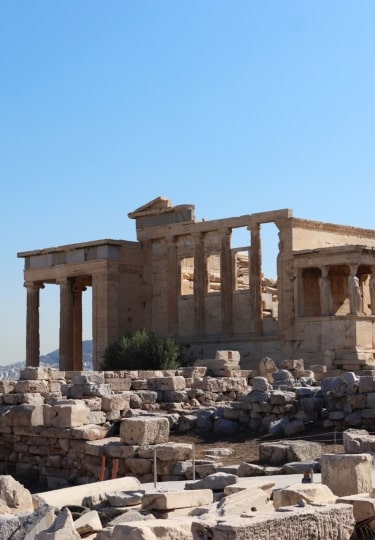What is Athens known for? Well it’s the cradle of democracy for one thing, a city that rivals Rome for having the most significant ancient sites in the world, the iconic Parthenon-topped Acropolis immediately recognisable from anywhere in the city. It’s the place that gave us philosophy, medicine, mathematics, and more – and there’s ample evidence of this in those ancient sites.
But Athens is also famous for much more. Its seaside location opens the visitor up to the possibility of remote beaches and chic seaside suburbs, while back in the center there’s incredible shopping, leafy gardens, hip hangouts, and delicious street food.
Thinking of visiting this incredible city? Layer upon layer of history aside, you’ll be surprised to discover just how dynamic and vibrant the Greek capital is.
The Acropolis

Acropolis
The number one answer to the question “What is Athens known for?” has undoubtedly to be the Acropolis. When arriving in the city center, this ancient citadel seems to dominate the view from almost every angle – and so it should.
The ancient site, home to the iconic Parthenon the Erechtheion, the Temple of Athena Nike, and the Propylaea, is the city’s crown jewel. Vying with Rome’s Colosseum as the world’s most instantly recognisable ruin, the Acropolis was the birthplace of Western democracy and the epicenter of Ancient Athenian culture and religion.
It’s an incredible must-see, from the minute you start to take the ancient marble paths to the summit, to the second the views of modern Athens spread out before you. For a crash course in ancient Greek culture, it’s unrivalled. Just make sure to wear sturdy shoes – the marble steps are as slippery as they are old – and carry both water and some form of shade; the top is exposed to the glaring sun in summer.
Acropolis Museum
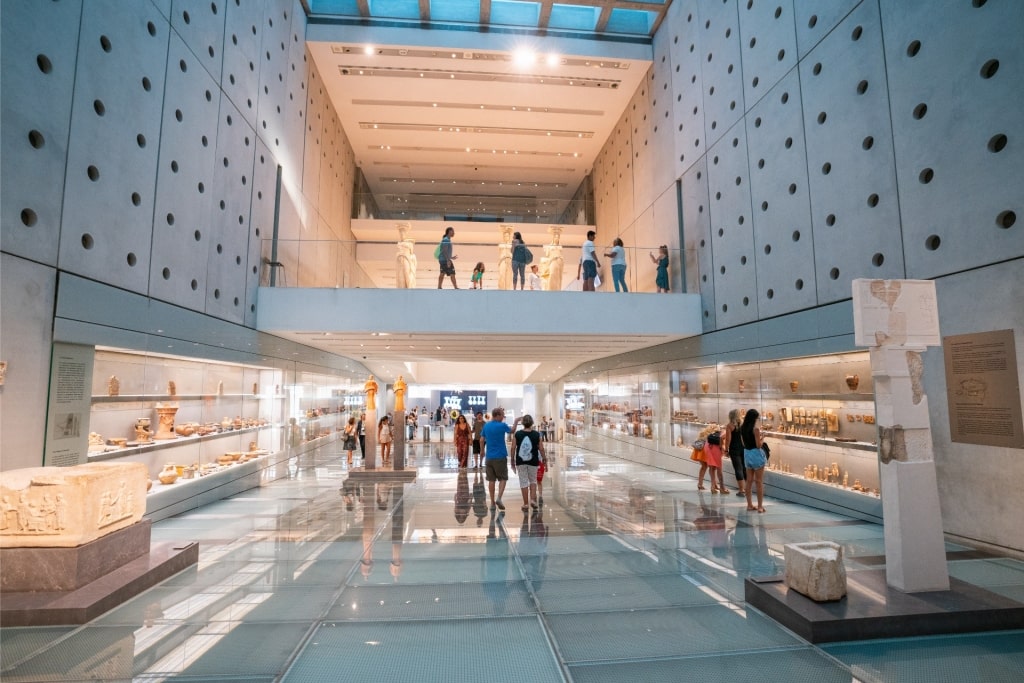
Acropolis Museum
Greece has a long-standing difference with London’s British Museum over the status of the Elgin Marbles, a series of sculptures removed from the Parthenon and shipped to England in the early 19th century. The main thrust of the British argument was that Greece had nowhere to house them, and so in 2009 the new Acropolis Museum was opened as a riposte – leaving space in the top floor Parthenon Gallery for their return.
While that pressure is yet to see the marbles’ permanent return to Athens, the museum is no less stunning. Sitting in the foothills of the Acropolis, it was designed by renowned architects Bernard Tschumi and Michael Photiadis, providing an incredible setting for numerous priceless sculptures, statues, and friezes.
Look out for the glass floors in the entrance which reveal ongoing excavations under the museum, and make sure to stop for something to eat in the restaurant. The terrace here offers the best views in town of the Parthenon.
Dining in Plaka and Anafiotika

Greek salad
Also in the foothills of the Acropolis, Plaka is the capital’s foremost entertainment district – for visitors at least. Incredibly picturesque, it’s a maze of cobblestone streets, neoclassical houses, and tavernas draped in scarlet bougainvillaea.
At its heart, Plaka can feel pretty touristy thanks to an abundance of souvenir shops and cookie-cutter eateries but head into the back streets and you can find some more authentic places, particularly in Anafiotika.
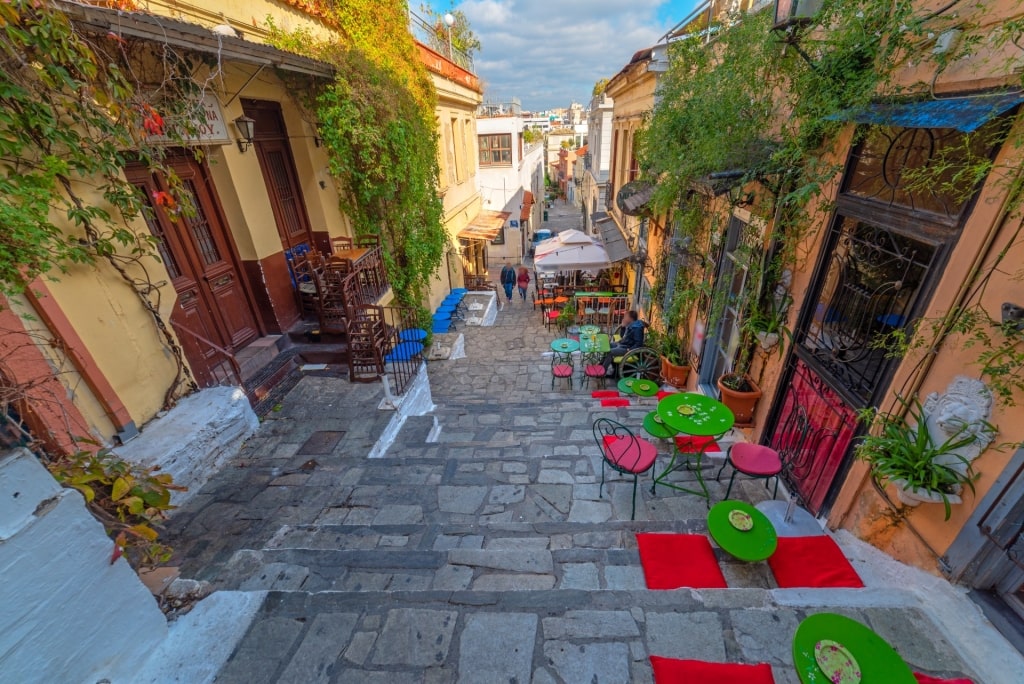
Anafiotika
This neighborhood-within-a-neighborhood was built in the 19th century by craftsmen from the island of Anafi, who were brought to work on a royal palace. The result has the look and feel of a Cycladic island: whitewashed homes, stone walkways, and hidden tavernas. Close your eyes and you can almost hear the lap of waves.
If mournful music with the strum of a bouzouki is coming from anywhere indoors, take a peek inside. It’s likely a Rembetico joint, its patrons chilling out to this unique Greek version of the Blues.
Read: Three Days in Athens
Syntagma Square
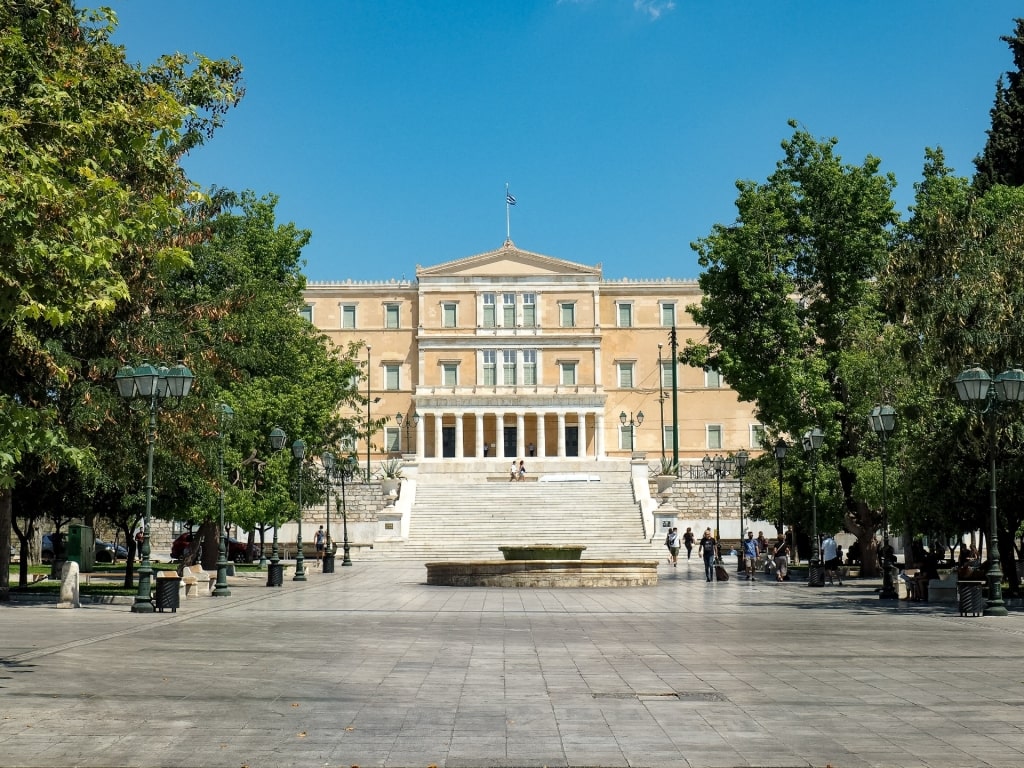
Syntagma Square
The beating heart of modern Athens and notional center of Downtown is Syntagma Square, a meeting place of the main thoroughfares, transport hub, gardens, and the Greek Parliament building, formerly the Royal Palace.
It’s here you may spend most of your time thanks to it being home to the Tomb of the Unknown Soldier which in turn is guarded by the legendary Evzones presidential guard. This elite regiment of the Greek army is known for its traditional dress: kilt-like “foustanellas” and pom-pom-topped heavy clogs, known as “tsarouchia”.
The best time to see them in action is for the hourly goose-stepping Change of the Guard. The loud stamp of the clogs is designed to let “even the dead’ know that Greece is free. The pom-poms, meanwhile, are more dangerous than one might suspect – they were originally used to hide small daggers from foes. Every Sunday at 11am there is a Grand guard change with a full military band and much pomp and circumstance.
National and Zappeion Gardens
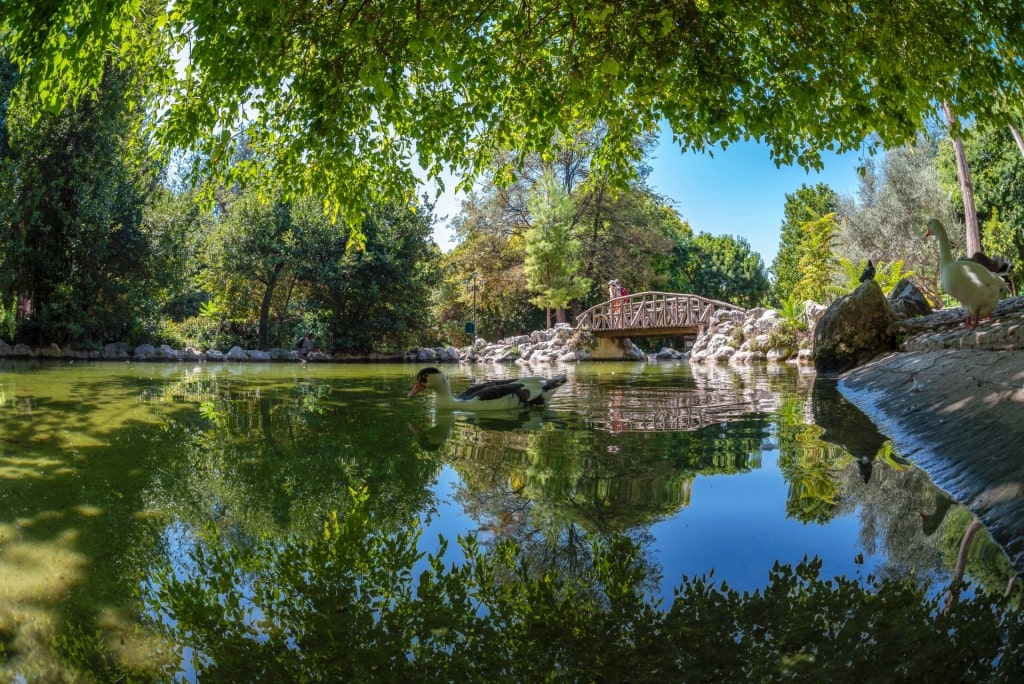
National Gardens
When the heat of Athens gets too much of a summer afternoon, many locals will head into the National and Zappeion gardens, back-to-back shaded retreats adjacent to the Parliament building.
The National Gardens were originally built by Queen Amalia in 1838 as the Royal Gardens, designed for her to stroll through a botanical paradise with exotic plants and shady walkways. Today it’s one of the best places in the center of town to cool down and spend some time among the ancient trees, old statues, Roman ruins, and the small petting zoo.
Adjacent are Zappeion Gardens – set around the neoclassical Zappeion Hall – which have a similar feel. Now an exhibition centre, the hall was originally built as part of the first modern Olympics of 1896.
Metro Station Art
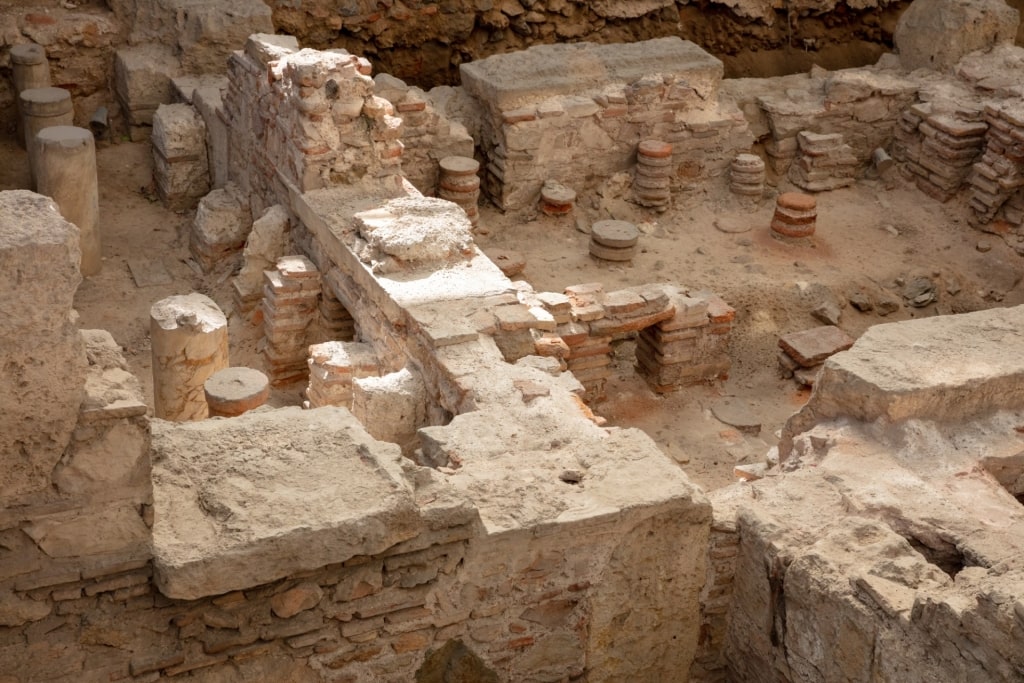
Syntagma Station
The idea of an integrated Metro rail system for Athens had been touted as a means to reduce modern congestion since the 1950s. But it was not until 1992 that construction beyond a single ancient line, which dated from 1869, began.
One of the main reasons for the many delays was that Athens is a city built in layers – and for a while it seemed like every time ground was broken, another ancient site was found. Excavations revealed entire sections of ancient roads, baths, mosaics, and cemeteries. By the time the project was completed in the early 2000s, some 50,000 artefacts had been unearthed, making it among the largest urban archaeological projects in Europe.
Many of those artefacts are now on display in the central stations, offering a fascinating and free insight into subterranean Athens. Syntagma Station is the most impressive, with ancient artifacts, Roman baths, and a display featuring a cross-section of Athens’ history, while Monastiraki Station has a glass-floor revealing ancient ruins. Evangelismos Station adds modern Greek art, including a striking metal sculpture.
Hadrian’s Arch & Temple of Olympian Zeus
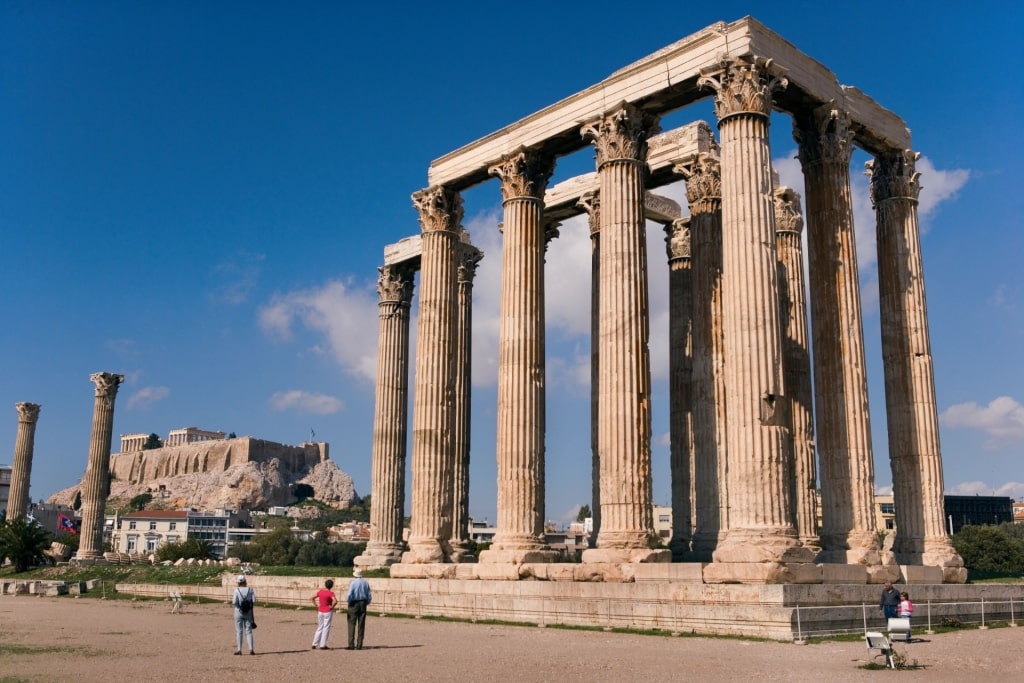
Temple of Olympian Zeus
What is Athens famous for? Perhaps the fact that it’s as much an ancient Roman city as it is a Greek one – and these two key periods of city history are thought to have been linked by an ancient route between the Acropolis and the Temple of Olympian Zeus.
The latter, a Greco-Roman temple in honor of the King of the Gods, was once the largest temple in Greece with 104 towering columns, of which 15 remain today.
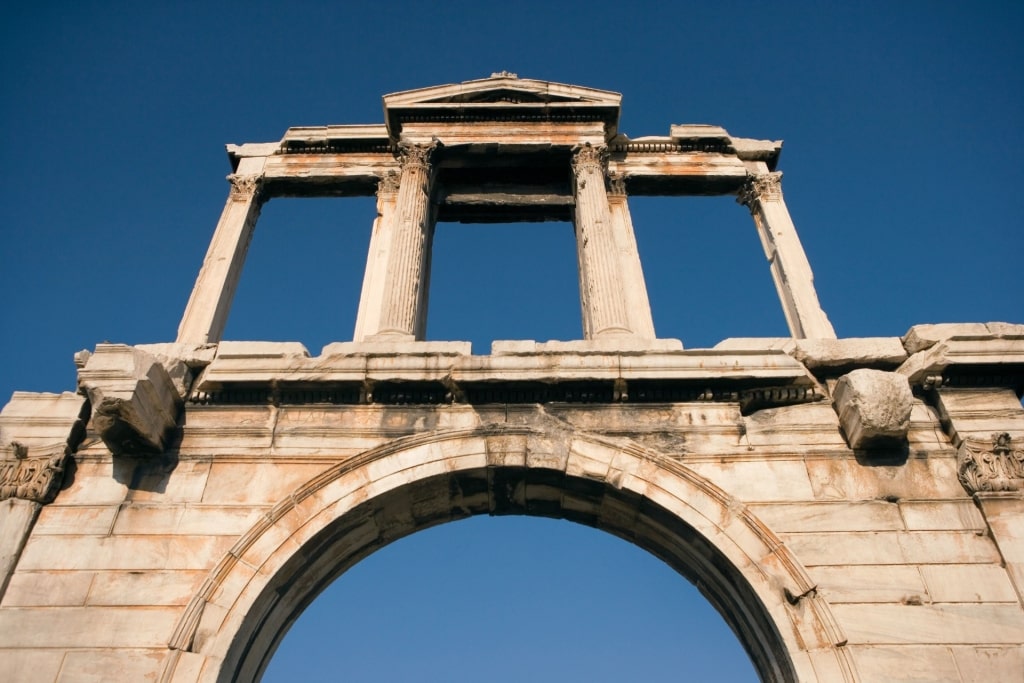
Hadrian’s Arch
In the middle of this route, the Roman Emperor Hadrian constructed a huge arch – a prototype “Welcome to Athens, Greece” sign. On the one side facing the Acropolis it bears the inscription “This is Athens, the ancient city of Theseus”. The other, facing the temple reads: “This is the city of Hadrian and not of Theseus”. If you want to take home the best picture of the Acropolis, it can be framed perfectly by the arch itself.
The Athenian Riviera
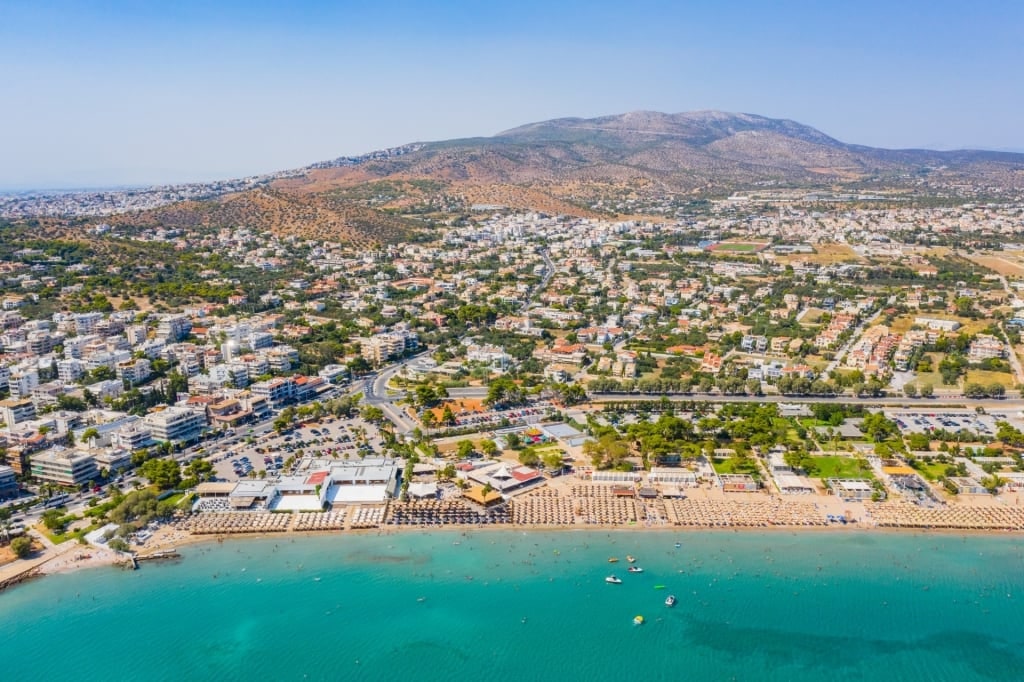
Athenian Riviera
It’s easy to forget that, like Barcelona, Athens is as famous for its seaside location as much as its downtown area. The Athenian Riviera stretches from the port of Piraeus for more than 30 miles down to Cape Sounion at the southern tip of the Greek mainland.
The further you get, the more the city is left behind and a succession of beachside suburbs open up. Chic Glyfada complements high-end shopping with a series of Athenian beaches and marinas, and Vouliagmeni is home to some great organised beaches and a mysterious lake.
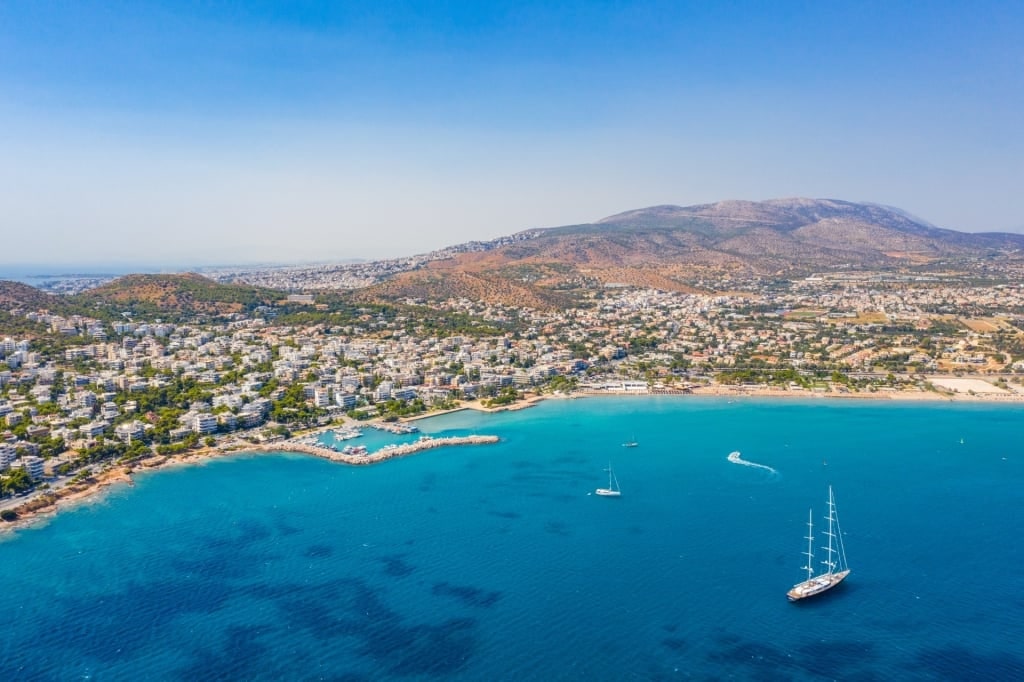
Athenian Riviera
Set back from the beach, the brackish waters here – a mix of sea water and the output of mineral-laden underground streams – have a constant year-round temperature. As such, visitors claim bathing here can help with everything from skin conditions to digestive issues.
Once past Lagonisi, the resorts are smaller and more traditional, the waters increasingly more clear. Cape Sounion at the tip of the peninsula is home to the legendary Temple of Poseidon, redolent with ancient myths, and offering clear views out to the nearest islands.
Panathenaic Stadium
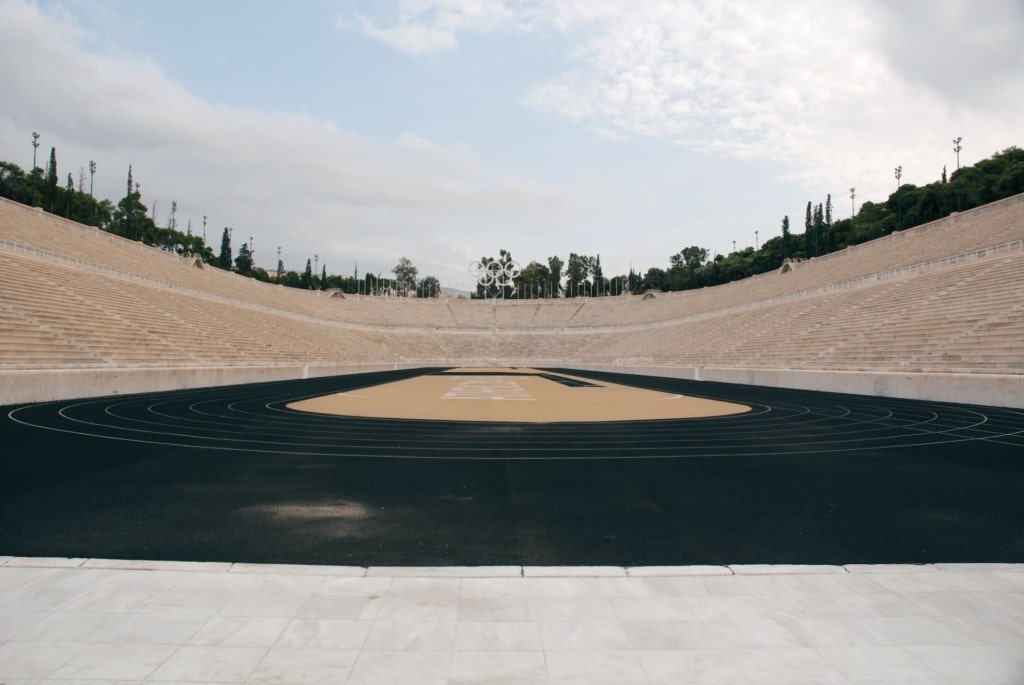
Panathenaic Stadium
If you’ve ever watched any major sporting event live from Athens, it likely featured images of Athens Panathenaic Stadium. In a forested setting a 10-minute walk through the National Gardens from Syntagma, it was originally built in 330BC for the Panathenaic Games, and later rebuilt in 144 AD by the Roman Emperor Herodes Atticus.
In 1896 it was modernised for the first Olympic Games of the modern era and has been in use ever since. The stadium is the only one in the world to be made entirely of white marble, from which it gained its colloquial name of Kallimarmaro, or “beautiful marble”.
Unless there is an event on, visiting is fairly easy. You can simply walk in and take a stroll around – or even jog over the finish line of the annual Athens Classic Marathon. The stands feel like they have a gentle slope until you climb the steps to the last row. It takes a little heart-thumping effort to do so, but the views here are incredible.
Mount Lycabettus
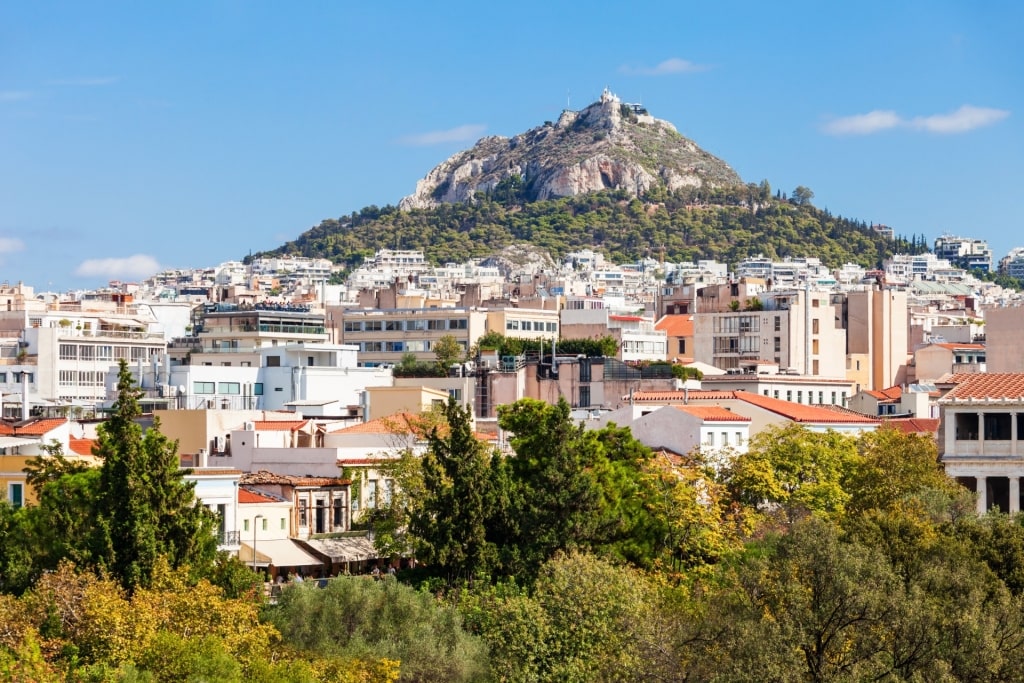
Mount Lycabettus
The Acropolis may dominate the skyline in downtown Athens, but it does have a rival. The actual highest point in the city is Mount Lycabettus, a steep limestone hill, its lower levels covered in pine forests. Close to the upscale Kolonaki neighborhood in Athens, it towers over the city reaching some 900 feet up into the clouds.
There’s a pleasant hiking trail to the summit which takes around an hour, or you can jump on the Lycabettus Funicular, which runs every 30 minutes from Aristippou Street in Kolonaki. Half-way there’s an open-air theater which has played host to some of music’s biggest names, while at the very top sits the 19th-century whitewashed Chapel of St. George and a pleasant café. The views from the summit are staggering, reaching as far as the Peloponnese, some 50-plus miles away.
Monastiraki Flea Market

Monastiraki Flea Market
In a little pocket between the Acropolis, Syntagma and the hip Thisseio district lies one of Athens’ best shopping experiences, the Monastiraki Flea Market. A bustling, open air market alongside permanent shops, it’s part bazaar, part thrift store heaven where you can pick up almost anything you desire.
Whether you’re after handmade jewelry, second-hand books, retro vinyl, a kitsch “evil eye” keychain, or even pre-war Greek currency, you’ll likely find it here. Sundays see the most stores, shops, and street vendors trading, but you can visit on any day to pick up bargains – remembering, of course, to haggle.
Avissinias Square, a hub for antique hunters, is filled with old furniture, vintage cameras, and oddities, making it a great place for social media-friendly images. There’s also a number of places with decent souvlaki, a street food kebab, for lunch.
Kolonaki Square
Downtown Athens’ most upscale district is Kolonaki, a super-posh neighbourhood at the foot of Lycabettus and north of Syntagma Square. Think Mayfair in London or New York’s Upper East Side: posh apartments, elegant homes, designer shops, and embassy buildings can all be found here.
The main gathering place and Athens’ best place for people watching is the central square with its upscale cafés, chichi wine bars, and art galleries acting as a place for old-money Athenians, diplomats, and trendy locals to gather.
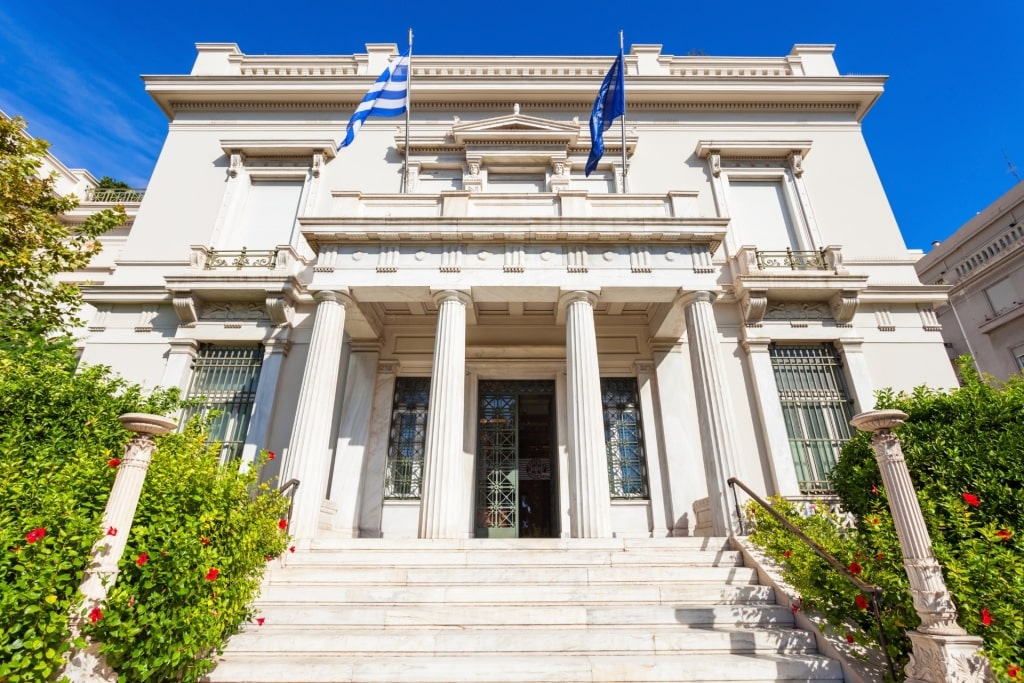
Benaki Museum
Join them in one of the cafés, or head to Voukourestiou Street for designer shopping. For a little more culture, the Benaki Museum and Museum of Cycladic Art are a short walk away.
Psiri
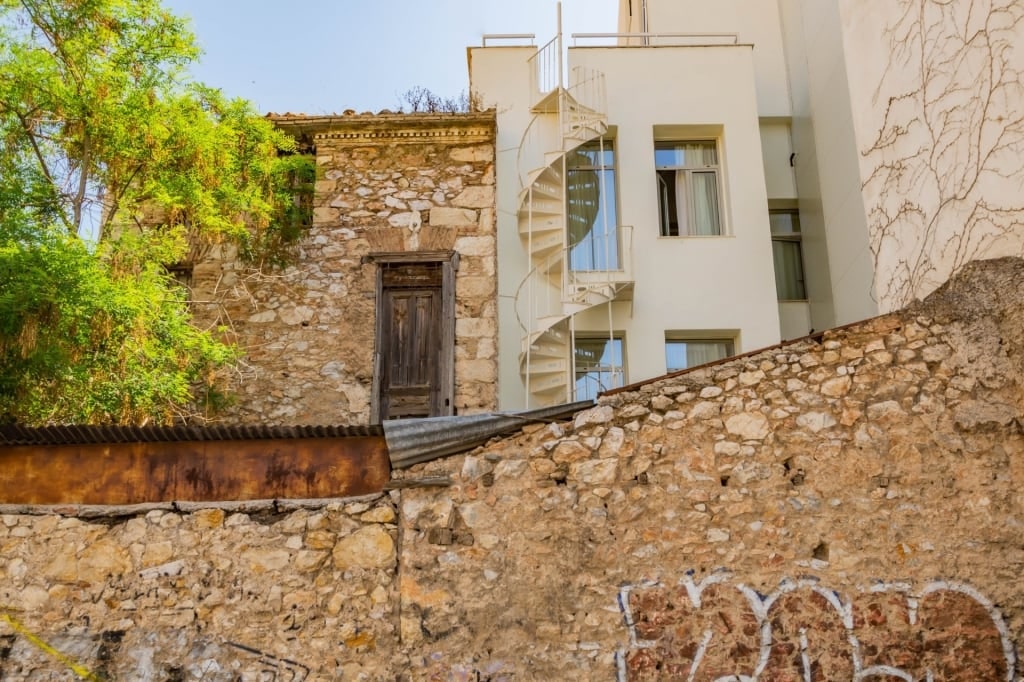
Psiri
Athens is increasingly known for being one of the hippest cities in Europe and there’s no trendier area to hang out than Psiri. Just north of Monastiraki, it’s where the capital’s hipsters chill in quirky bars, meze tavernas, and live music spots.
Once a gritty working-class district, it’s now a vibrant hub of nightlife, culture, and creativity, where old-school Athens meets the city’s modern alternative scene. Most of the venues – hidden rooftop bars, rembetiko music joints, and late-night street-food options – can be found in lovingly restored neoclassical buildings. The latest hip place to hang changes with the seasons.
While Psiri largely wakes up in the evening, by day it has a more laid-back charm and is a great spot for brunch or coffee. Daylight also offers the best views of some top-class murals around Sarri and Louka Nika streets.
Read: The Ultimate Guide to Food in Athens
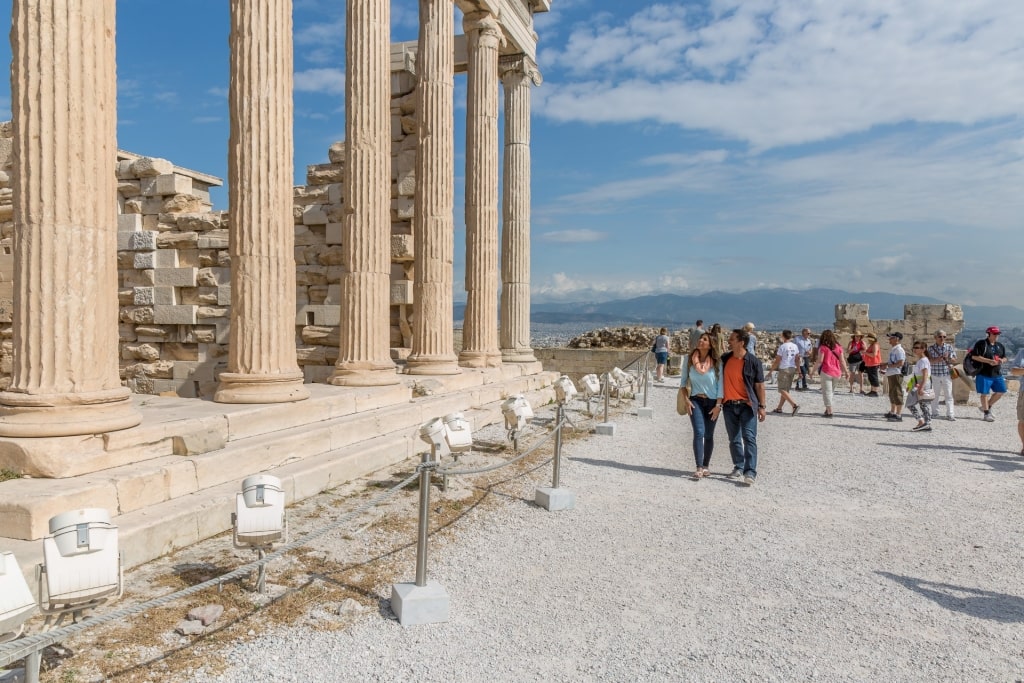
Acropolis
Discover the Greek capital for yourself. Browse Celebrity’s cruises to Athens and plan your dream vacation.
